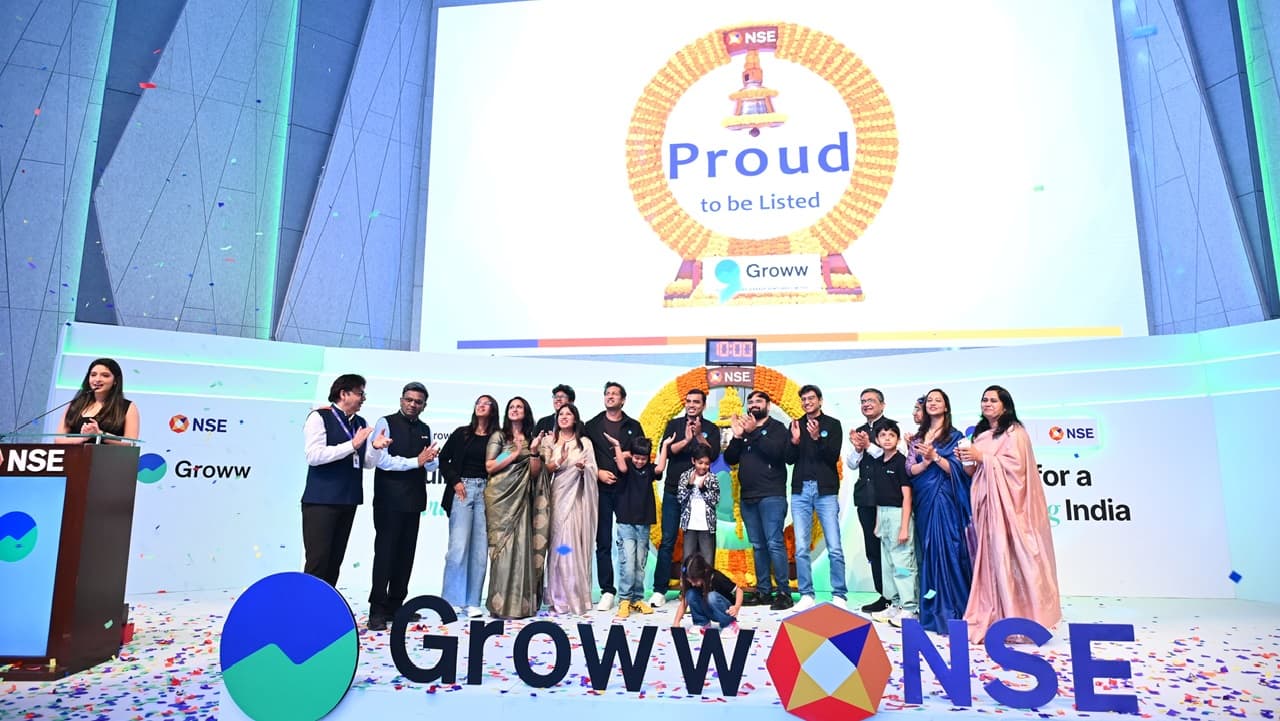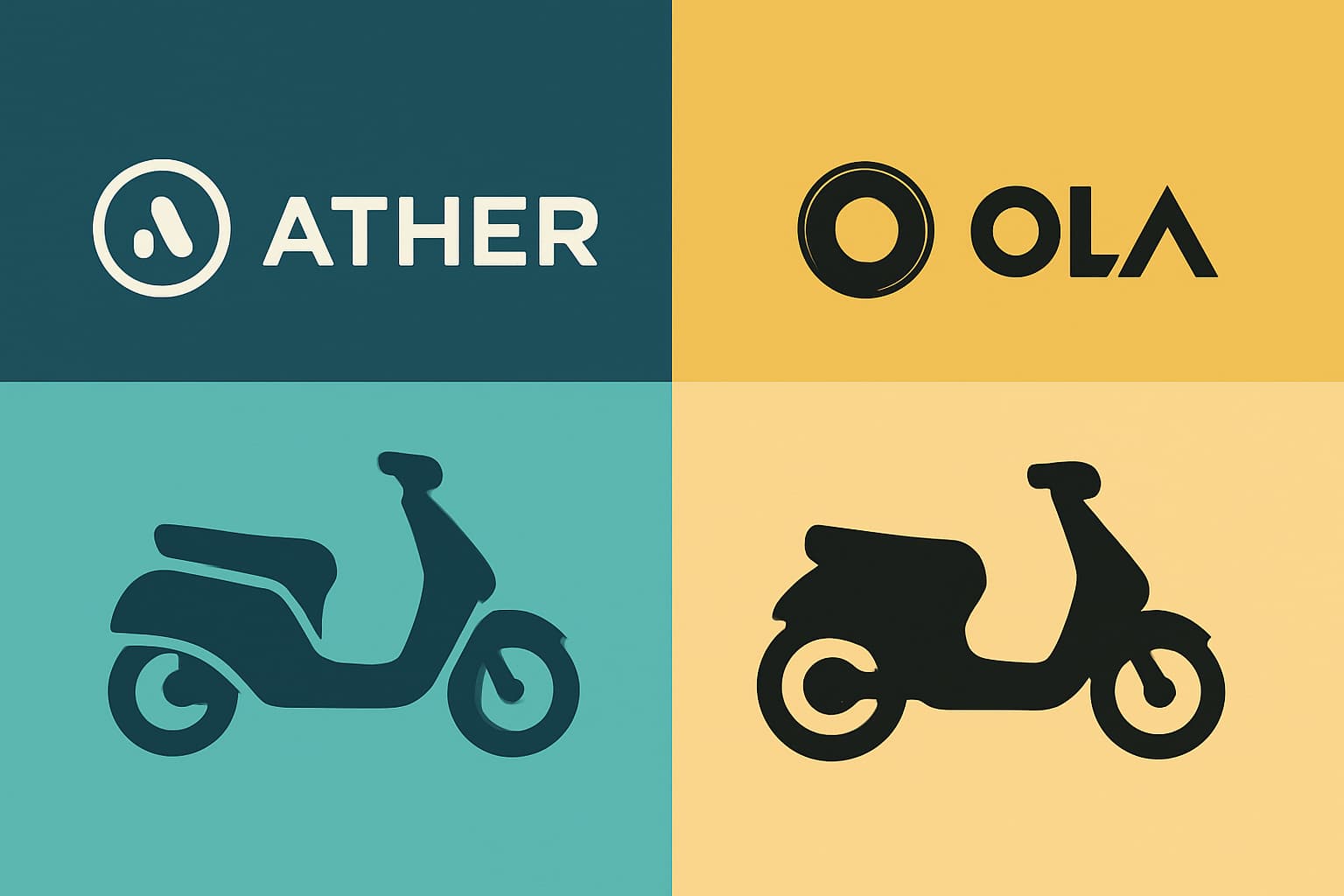 Top 3 stories
Top 3 stories
Groww's bumper debut

Just like investing through Groww has been a winning bet for millions of retail investors, investing in Groww turned out to be equally rewarding.
Taking stock
The stock opened at Rs 112, hit a high of Rs 134.4, and settled at Rs 128.85 on the NSE, a 28.85% gain over its issue price of Rs 100.
The stock's market capitalisation at the end of the debut day stood at Rs 80,837.07 crore.
Getting the pricing right
In a market where many tech IPOs stumble on lofty valuations, Groww stood out as the rare “new economy” firm that priced fairly and performed profitably.
- The company boasts one of the strongest EBITDA profiles among peers and a more reasonable price-to-earnings multiple compared to its startup contemporaries
Analysts credit its premium to strong leadership and operational discipline, not inflated tech hype.
Beyond the FOMO
While India’s IPO scene has seen a fair share of frothy, fear-of-missing-out (FOMO) listings, experts caution against judging success too soon.
"You can judge a company’s listing success only after a few quarters as a public company. Listing day cannot be seen as a barometer of the company’s performance or investor expectation anymore,” said Srinath Sridharan, author and policy researcher.
Another IPO size cut
After Pine Labs, Capillary Technologies has also cut its IPO size, from Rs 430 crore to Rs 345 crore, amid waning investor interest in secondary share sales.
“Initially it was supposed to be a Rs 430 crore primary, and it's now a Rs 345 crore primary. We’ve generated about Rs 55 crore of free cash in the business in the first half of this year. With that kind of cash being generated, we felt we probably wouldn’t need to use the entire Rs 430 crore,” cofounder and CEO Aneesh Reddy said.
The firm has fixed a price band at Rs 549-577 per share for its initial public offering.
MeitY vs tech bodies on deepfake rules

When every touch-up risks being tagged ‘synthetic,’ tech firms are starting to sweat.
Driving the news
India’s tech industry is pushing back against MeitY’s draft deepfake rules, warning that the proposal to label all AI-generated or altered content could sweep up harmless edits and inflate compliance costs.
Released on October 22, MeitY’s draft amendment to the IT Rules, 2021, seeks to curb the spread of deepfakes and AI-generated misinformation.
What’s the industry saying
IAMAI is set to caution that the definition of "synthetic" content is too broad, potentially capturing “AI-assisted grammar correction, image enhancement, or sound mixing.”
- Nasscom, in its November 8 submission, argued that "almost all digital content" could end up being labelled as synthetic”
- BSA — representing Adobe, Microsoft, and OpenAI — urged MeitY to avoid a "one-size-fits-all" approach
- The ITI Council also recommended narrowing the definition of SGI
What the draft rules propose
It defines “synthetically generated information” as any content created or altered using a computer resource “in a manner that reasonably appears to be authentic or true.”
- Platforms hosting such content must label or identify it—either via visible tags or embedded metadata—and inform users
Find out more
Ather's edge over Ola Electric explained

India’s EV rivalry charged up this earnings season, with Ather Energy pulling ahead of Ola Electric on most key metrics in Q2 FY26.
Tell me more
India’s top two EV startups, Ather Energy and Ola Electric, posted contrasting results in Q2 FY26.
- Ather Energy reported revenue of Rs 898 crore, up 54% year-on-year, while Ola Electric’s topline slipped 43% to Rs 690 crore as deliveries softened
Both firms narrowed their losses, but Ather’s tighter cost control helped it close the quarter with a net loss of Rs 154 crore.
However, both managed to narrow losses. Ather reported a net loss of Rs 154 crore, and Ola’s stood at Rs 418 crore as against Rs 495 crores last year, as efficiency measures and a focus on premium models began to pay off.
Deep dive on numbers
Ola Electric recorded its first-ever profitable quarter at the auto business level, achieving a 0.3% positive EBITDA margin backed by cost-cutting and higher Roadster sales.
- Ather, meanwhile, improved its EBITDA margin by 1,100 basis points YoY to -10%, with a 22% gross margin
Ola’s operating expenses fell to Rs 416 crore, reflecting a 46% YoY improvement in EBITDA losses, while Ather’s expenses grew 37% YoY due to production ramp-up.
Market share race
While both players are refining their playbooks for scale and profitability, Ola Electric is losing ground in terms of market share.
Recent data from Vahan as of October end shows that Ola has slipped to fourth place in the Indian electric two-wheeler market, with its share dropping to around 11%, while legacy players like TVS Motor Company and Bajaj Auto jump ahead. Just over a year ago, Ola held more than 35% market share.
Both firms, however, are gearing up for their next phase of expansion.
- Ola is betting on its upcoming Gigafactory and in-house cell manufacturing under the “Ola Shakti” line, expected to drive growth from FY27
- Ather is setting up a new Maharashtra plant, slated to start operations by March 2026, to boost capacity and lower unit costs
With both closing in on breakeven, Analysts say that India’s EV race is entering a phase defined less by discounts and more by financial discipline.
Find out more
MC Special: Persistent, Mphasis outshine large caps on this metric

Not just in revenue growth, mid-tier IT firms are now surpassing their Tier-I rivals in billable revenue per employee as well—driven by AI-powered efficiency gains and selective hiring. Persistent Systems and Mphasis reported year-on-year increases of 8.6% and 6.2%, respectively, in billable revenue per employee during the September quarter.
Among Tier-I IT majors, HCLTech had the highest billable revenue per employee at $17,822 in Q2, growing 5.2% YoY, estimates from UnearthInsight show.
- Meanwhile, India’s largest IT firm TCS’ estimated billable revenue per employee grew only 0.4% YoY despite its ongoing efforts to trim its global workforce
Go deeper








